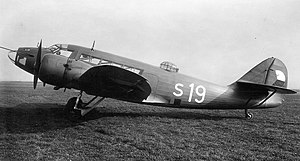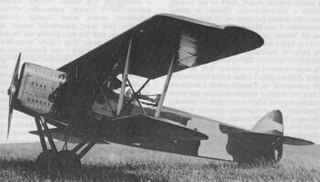
The Aero A.11 was a biplane light bomber and reconnaissance aircraft built in Czechoslovakia between the First and Second World Wars. It formed the basis for many other Czechoslovakian military aircraft of the inter-war period. Around 250 were built, with some remaining in service at the outbreak of World War II.

The Aero A.12 was a Czechoslovakian biplane light bomber and military reconnaissance aircraft manufactured in small numbers shortly after World War I. Although reminiscent of the Hansa-Brandenburg-designed aircraft that Aero was building during the war under licence as the Ae.10, the A.12 was the company's own design. It is perhaps most significant as the direct descendant of the highly successful A.11 and its various derivatives. An example of the type is preserved at the Letecké Muzeum in Kbely.

The Aero A.14 was a Czechoslovakian biplane military reconnaissance aircraft built in the 1920s. It was essentially a slightly modified version of the Hansa-Brandenburg C.I aircraft, widely-used by Austria-Hungary during the First World War, and for this reason, the aircraft is sometimes referred to as the A.14 Brandenburg. When equipped with a slightly different engine, the aircraft was designated A.15 instead. The two versions were otherwise almost identical.
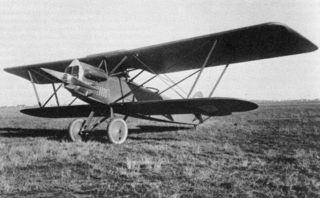
The Aero A.30 was a biplane light bomber and reconnaissance aircraft. It was built in Czechoslovakia, in the late 1920s. It originated as an attempt by Aero to improve the performance of the Aero A.11, but soon evolved into quite a different aircraft, larger, and more powerful than its predecessor. The aircraft is readily distinguished from other related types, through the difference in spans between its wings – the upper set being of much greater span than the lower.

The Aero A.32 was a biplane built in Czechoslovakia in the late 1920s for army co-operation duties including reconnaissance and tactical bombing. While the design took the Aero A.11 as its starting point, the aircraft incorporated significant changes to make it suited for its new low-level role.

The Aero A.100 was a biplane light bomber and reconnaissance aircraft built in Czechoslovakia during the 1930s. It was the final step in a design lineage that extended back to the Aero A.11 a decade earlier. A.100s remained in service throughout World War II and for a few years postwar.
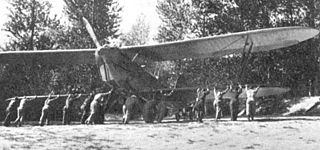
The Aero A.101 was a biplane light bomber and reconnaissance aircraft built in Czechoslovakia during the 1930s.
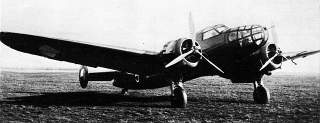
The Aero A.300 was a Czechoslovak bomber aircraft that first flew in 1938 as a much refined development of the A.304. It was designed by Aero to meet a requirement for a bomber-reconnaissance aircraft for the Czechoslovak Air Force, the Aero A-304 transport/bomber formed the basis for its design. It was a four-seat aircraft powered by two Bristol Mercury IX radial engines. The A-300 was faster than any other Czechoslovak aircraft in the inventory except for the Avia B-35 fighter. Despite showing much promise, development and production of the aircraft was stopped by the German occupation of Czechoslovakia.
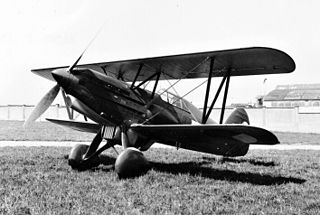
The Avia B-534 is a Czechoslovak biplane fighter developed and manufactured by aviation company Avia. It was produced during the period between the First World War and the Second World War. The B-534 was perhaps one of the most well-known Czechoslovakian aircraft of the era.

The Avia B.135 was a Czechoslovak cantilever monoplane fighter aircraft. It was the production version of the Avia B.35 developed shortly before the war, based on the B.35/3 prototype but featuring a new all-metal wing.

The Avia BH-33 was a biplane fighter aircraft built in Czechoslovakia in 1927. It was based on the BH-21J which demonstrated promising results by combining the original BH-21 airframe with a licence-built Bristol Jupiter radial engine. Other than the peculiar Avia hallmark of having an upper wing with a shorter span than the lower, it was utterly conventional, even featuring a tail fin for the first time in a Pavel Beneš and Miroslav Hajn design.
The Letov Š-16 was a single-engined twin-seat biplane aircraft used in the bomber and aerial observation roles. It was designed by Alois Šmolík and produced by the Czechoslovak aircraft manufacturer Letov Kbely.

Praga E-39/BH-39 was a Czechoslovak trainer aircraft.

The Letov Š-28 was a Czechoslovak single-engined, two-seat reconnaissance aircraft. It was manufactured by Letov Kbely in a number of versions with different powerplants. The most important version was the Š-328, which was produced in relatively high quantities.
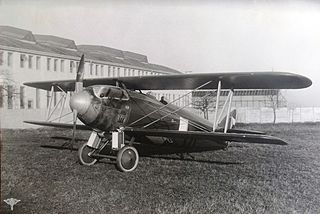
The Letov Š-20 was a fighter aircraft produced in Czechoslovakia during the 1920s.
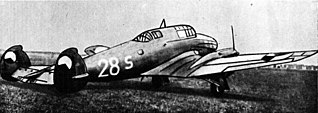
The Avia B.158 was a prototype Czechoslovak twin-engined light bomber aircraft of the 1930s. Only a single example was built and it was abandoned, following the German occupation of Czechoslovakia in March 1939.
The Letov Š-5 was a light scout aircraft built by Letov in the early 1920s.

The Praga E-51 is a Czechoslovakian reconnaissance aircraft and light bomber built by Praga in the 1930s. Development was halted by the annexation of Czechoslovakia by Germany, after only one prototype had been built. The appearance of the construction is very reminiscent of the contemporary twin engined fighter, the Fokker G.I from Holland.

The Walter NZ 85 was a seven-cylinder, air-cooled, radial engine for aircraft use built in Czechoslovakia by Walter Aircraft Engines in the late-1920s.

The Lazarov Laz-7 was a Bulgarian training aircraft of the 1940s and 50s. The first of three prototypes flew on 12 June 1948, and was followed by 160 production aircraft powered by a Czechoslovakian Walter Minor 6-III inline engine built from 1949 to 1952, and 150 Laz-7Ms powered by a Soviet Shvetsov M-11FR radial engine from 1952 to 1954. A single example of a four-seat light transport derivative, the Laz-8, was built in 1949. The Laz-7 and Laz-7M were used by the Bulgarian Air Force as a trainer and light bomber, and surplus examples were later transferred to flying clubs, were they remained in use until the late 1960s.
